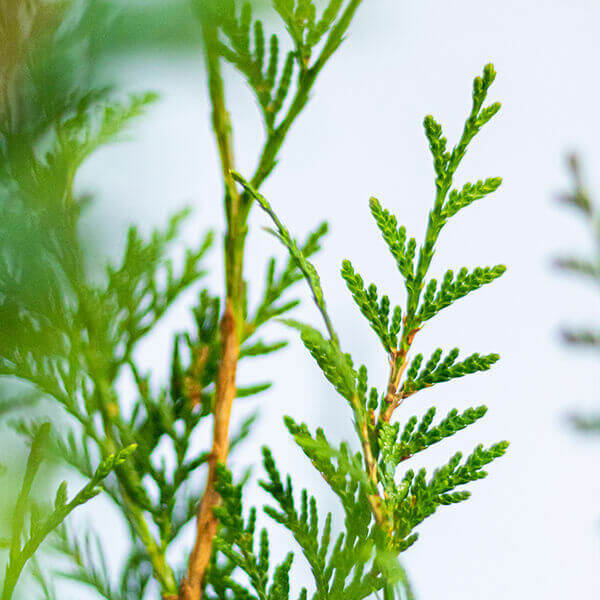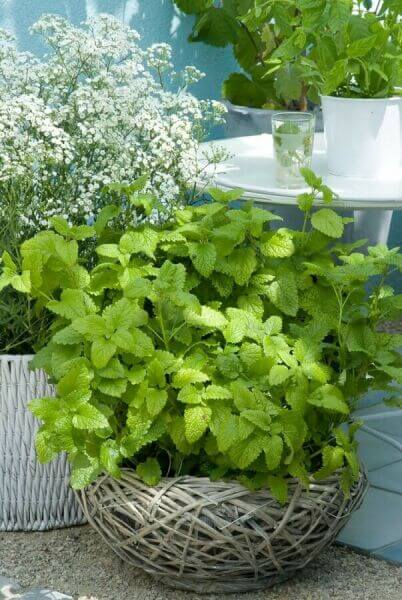Hedging Plants For Tall Screens
Hedging Plants For Tall Screens
Blog Article
Best Hedge Plants For Privacy
Enhance your garden's appeal with rich hedge varieties such as Yew (Taxus), Thuja, Laurel, Photinia, and Bamboo, commemorated for their structural integrity and ecological benefits.
Yew and Thuja supply evergreen protection and winter season durability, while Laurel provides rapid development and broad, fragrant leaves.
Photinia includes seasonal appeal with its lively red foliage, and Bamboo provides a low-maintenance, serene ambiance.
These hedges enhance air quality, decrease sound, and create tranquil, private areas.
Correct planting, spacing, and maintenance guarantee energetic growth and eco-friendly harmony.
Explore how these lavish varieties can elevate your garden's charm and wellness.
Secret Takeaways
Transform Your Garden With Lush Hedge Ranges
- Select Yew for its thick, evergreen growth and unrivaled longevity.
- Select Laurel for its fast growth and broad leaves, making sure fast privacy.
- Select Photinia for its lively seasonal foliage, which turns a striking dark red.
- Make use of Bamboo for a low-maintenance, winter-hardy hedge with aesthetic appeal.
- Area plants 2-3 per meter and prune frequently for optimum development and health.
Popular Hedge Plants
When changing a garden with lush hedge varieties, it's important to think about popular hedge plants such as Yew, Thuja, Laurel, and Photinia due to their distinct attributes and advantages.
Yew (Taxus) is highly respected for its longevity and thick, green development, making it a prime choice for sustaining landscapes.
Thuja is kept in mind for its evergreen foliage and robust winter season resilience.
Photinia adds seasonal vibrancy with red leaves that darken in time, producing dynamic visual appeal.
Laurel provides rapid growth and fragrant, broad leaves, perfect for quick personal privacy.
Furthermore, Bamboo is an exceptional option for atmosphere, using a low-maintenance, winter-hardy alternative that improves the garden's aesthetic with its classy, swaying walking canes.
These choices deal with a range of horticultural needs and preferences.
Advantages of Garden Hedges
Garden hedges provide a wide variety of advantages, making them an important addition to any landscape. These natural barriers are economical to execute and provide significant wind defense, improving air circulation and adding to sound reduction. The thick foliage of hedges like Thuja and Beech guarantees personal privacy by blocking exposure, creating a tranquil and secluded environment.
Hedges also play a vital role in microclimate regulation, providing a stable environment that cultivates plant growth and minimizes temperature level fluctuations. Their complex leaf structures filter pollutants, enhancing air quality and contributing to a much healthier garden ecosystem.
Additionally, hedges master sound reduction, taking in and deflecting sound waves to lower ambient noise levels. This double functionality of offering both visual and acoustic personal privacy boosts the general harmony and aesthetic appeal of any garden.
Planting and Maintenance Tips
For a successful hedge, careful preparation of the planting area is vital. Ensure the soil has appropriate pH and drain to support strong root development.
Space the plants properly for the chosen species. Water the hedge often throughout its initial growth phase, changing as required with seasonal changes.
Implement a methodical bug control and disease prevention technique, utilizing natural or chemical treatments when necessary. Routinely examine for aphids, termites, and fungal infections.
Apply mulch to maintain wetness and suppress weeds. Seasonal pruning promotes thick growth and air blood circulation, essential for plant health.
Following these guidelines will help you cultivate a dynamic, properly maintained hedge that enhances the beauty of your garden.
Spacing and Trimming Guidelines
Spacing and Trimming Guidelines
Proper spacing and trimming are important for cultivating healthy, aesthetically appealing hedges. Appropriate spacing makes sure each plant gets enough nutrients, light, and air flow.
Follow these standards for optimum hedge upkeep:
- Spacing: Position hedge plants 2-3 plants per meter to motivate robust development.
- Pruning Techniques: Routine pruning is necessary for keeping wanted hedge height and shape. Cut brand-new development in summertime and cut back older wood during winter.
- Seasonal Care: Adjust trimming methods and schedules according to seasonal requirements to ensure plant health.
- Hedge Height: Routinely monitor and trim to maintain the wanted hedge height and attain consistent aesthetic appeals.
Complying with these actions will ensure your hedge flourishes, enhancing both the appeal and performance of your garden.
Selecting the Right Hedge
Selecting the Right Hedge
Selecting the appropriate hedge includes assessing factors such as fully grown height, foliage density, and environmental resilience. Effective hedge plant selection needs comprehending each species' development qualities and site-specific adaptability.
For instance, Yew (Taxus) provides exceptional durability and dense development, while Thuja is notable for its winter season resilience. In addition, thinking about upkeep requirements is essential; fast-growing types like Laurel or Privet demand routine trimming, whereas low-maintenance alternatives like Bamboo or Ivy might be preferable for those seeking very little upkeep.
Ecological elements such as soil type, light availability, and moisture conditions should also assist the selection procedure. This careful method makes sure the chosen hedges will prosper, providing both aesthetic and practical advantages to the garden landscape.
Shipment and Planting Guidance
To guarantee your hedge plants grow, they ought to be provided by specialized carriers and planted promptly upon arrival.
Follow these vital actions for successful planting:
- Soil Preparation: Enhance the soil with natural matter to improve drainage and nutrient content.
- Planting Depth: Produce a trench two times the width and equivalent to the depth of the root ball.
- Watering Techniques: Water thoroughly after planting, keeping the soil regularly damp however not saturated.
- Mulching: Apply a layer of mulch to retain moisture and suppress weeds.
Customer Assistance and Service
Given the vital role of prompt assistance in horticultural pursuits, our client assistance team is readily available six days a week through telephone, e-mail, and social networks to use skilled guidance and quickly attend to any issues. Their devotion to fast reaction times guarantees client fulfillment by resolving queries related to plant health, optimal planting methods, and upkeep schedules.

Response Time
----------------------
Within 24 hours
This comprehensive support group, strengthened by an excellent 9.3/ 10 consumer rating, highlights our commitment to enhancing the gardening experience for each customer.
Often Asked Concerns
The Length Of Time Does It Consider Hedge Plants to Develop?
Hedge plants usually need one to 3 years to end up being totally developed, with the specific period differing by types and growing conditions.
Efficient care throughout this vital duration is vital for robust growth. Consistent watering, vigilant weed Additional hints control, and appropriate fertilizer application are pivotal in promoting strong root development.
For instance, fast-growing types like Laurel might establish quicker, while slower-growing varieties such as Yew might take longer. Diligent maintenance speeds up the facility procedure, resulting in healthy and dense hedges.
What Are the very best Hedge Plants for Personal Privacy?
The question of the best hedge plants for privacy involves examining evergreen and deciduous alternatives.
Evergreen hedges like Thuja, Laurel, and Cypress supply year-round protection, guaranteeing continuous personal privacy.
On the other hand, deciduous hedges such as Beech provide seasonal privacy, shedding leaves in cooler months.
Secret maintenance tips for personal privacy hedges include regular cutting, fertilizing in spring, and appropriate spacing-- typically 2 to 3 plants per meter.
In addition, consistent watering and diligent weed removal are crucial for promoting healthy, thick growth.
Can Hedge Plants Attract Wildlife to My Garden?
Yes, hedge plants can bring in wildlife to your garden by providing necessary benefits like shelter, food, and nesting sites, consequently enhancing regional biodiversity. Yew, holly, and laurel are excellent for drawing in birds, while ivy supports a range of bugs.
Nevertheless, it's essential to keep in mind that there are some disadvantages, such as increased upkeep to manage insects and regular upkeep. Thoroughly selecting and preserving hedge ranges can help stabilize these downsides and benefits, ultimately cultivating a sustainable and lively ecosystem in your garden.
Are There Any Blooming Hedge Plants Available?
Yes, there are flowering hedge plants offered that can improve the appeal of your garden.
For example, Elaeagnus, likewise referred to as Olive Willow, produces fragrant white flowers in the fall, adding a touch of beauty.
Photinia, another popular option, showcases vibrant red leaves that develop into an abundant green, developing a vibrant visual effect throughout the seasons.
To guarantee these plants prosper, it's necessary to practice proper pruning methods and seasonal maintenance, such as trimming new development in the summer season and cutting down in the winter.
These measures will help preserve the health and aesthetic appeal of your flowering hedges.
How Do I Avoid Insects in My Hedge Plants?
To avoid bugs in hedge plants, use natural bug control approaches and keep correct hedge care. Present beneficial insects like ladybugs, which take advantage of hazardous insects, to produce a balanced community.
Routinely inspect your hedges for signs of infestation and quickly remove any affected parts to prevent the spread. Ensure the health of your hedges by applying well balanced fertilizers and supplying appropriate water.
Make use of mulching to keep soil moisture and proper spacing to minimize plant tension and promote robust growth. These practices collectively assist in minimizing insect problems and preserving a healthy hedge.
Conclusion
In essence, selecting the right hedge ranges such as Yew, Thuja, and Laurel can transform any garden into a tranquil sanctuary. These plants supply year-round plant, enhance aesthetic appeal, and deal useful benefits like sound decrease and wind defense.
Appropriate planting techniques, precise spacing, constant watering, and seasonal cutting are important for ideal growth.
Dependable shipment services and professional customer assistance guarantee a smooth experience from purchase to planting, making it easier than ever to elevate your outdoor area.
Garden hedges offer a multitude of advantages, making them a valuable addition to any landscape. These natural barriers are cost-efficient to execute and supply considerable wind protection, improving air circulation and contributing to sound decrease. The dense foliage of hedges like Thuja and Beech makes sure privacy by blocking visibility, producing a serene and secluded environment.

Pruning Strategies: Routine pruning is vital for maintaining desired hedge height and shape. Cut new growth in summer season and cut back older wood during winter.
Report this page